Your basket is currently empty!
Home / Mushroom Guide /
False Chanterelle
False Chanterelle
Not strictly speaking a poisonous mushroom but they can cause alarming symptoms in some people.
| Mushroom Type | |
| Common Names | False Chanterelle (EN), Siantrel Ffug (CY), Lisówka Pomarańczowa (PL), Narancsvörös Álrókagomba (HU) |
| Scientific Name | Hygrophoropsis aurantiaca |
| Season Start | Jul |
| Season End | Nov |
| Average Mushroom height (CM) | 4-9 |
| Average Cap width (CM) | 3-8 |
Cap
3-8 cm. Yellow, yellow/orange/brown. Starting convex becoming shallowly funnel shaped with an in-rolled, undulating margin.
Stem
2-6 cm long, 0.3-1 cm diameter. Yellow/orange tapering slightly towards the base, often curved.
Habitat
Mainly coniferous woodland but can be found on heaths and occasionally with deciduous trees.
Possible Confusion
The poisonous Jack O’Lantern (Omphalotus illudens), is a very rare mushroom in Britain, it grows on deciduous wood, it has true gills and is bigger and darker orange in colour.
Chanterelle (Cantharellus cibarius), pictured, is a much more yellow colour. It is normally larger and prefers more acidic soil. It has broader mycorrhizal partner range, prefers Beech, Birch, Oak, Spruce and Pine. Its fruity smell is similar to apricot.
Amethyst Chanterelle (Cantharellus amethysteus), has various yellow based colour with a hint of purple to amethyst at the centre. It also prefers acidic soil, fruiting under hardwoods, e.g. Oak, Beech and Birch, but occasionally under conifers, e.g. spruce.
Frosted Chanterelle (Cantherellus pallens), is similar but larger and has a pale yellow cap with a dusting of white, particularly near the middle.
Pale Chanterelle (Cantharellus ferruginascens), looks rather similar to the Frosted Chanterelle, however there is no whitish dust-like cover at centre of its cap. It is one of the rarest amongst the Chanterelles in the UK.
Spore Print
White. Ellipsoid.
Frequency
Common.
Other Facts
A beautiful but annoying mushroom to find. Once you know them you can normally tell the difference between these and their tasty look-a-likes the true chanterelles on sight from a few feet away. Even so you can still try to convince yourself they are Chanterelles, so strength of mind and will may need to be employed if you find them!

















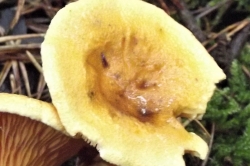
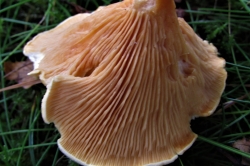
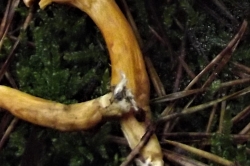
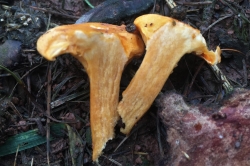
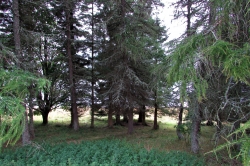
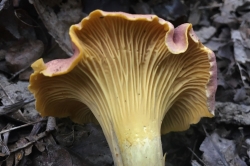






Leave a Reply